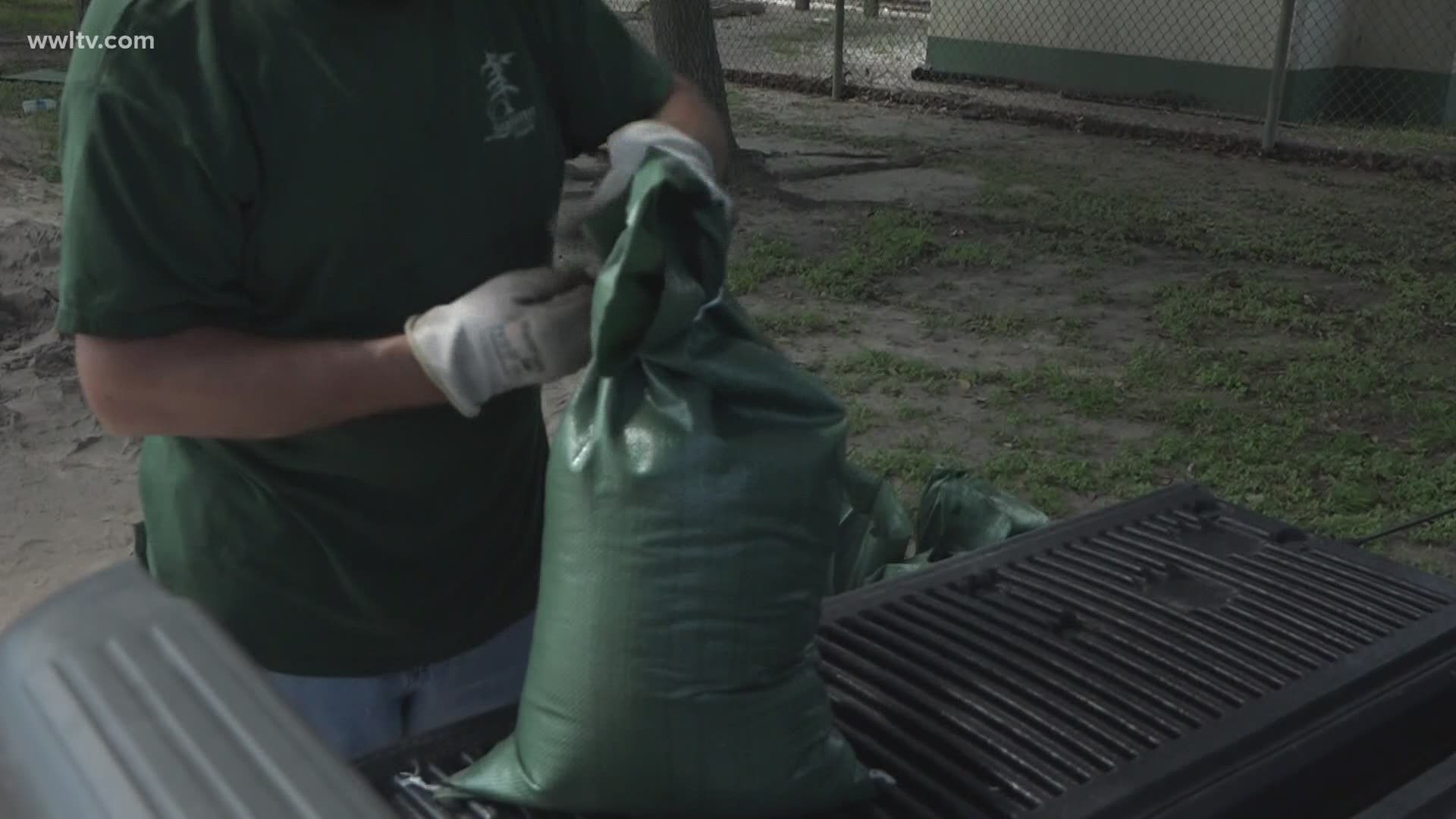NEW ORLEANS — Setting up sandbags is an art, that’s for sure. And while everyone has their own way of doing it, there are some important things to remember.
A lot of times when sandbags are used, they’re not used correctly, which means you’re not getting the best protection in case of a flood. So tip one, how to fill a sandbag.
First, use gloves. Between shoveling, tying and lifting, filling sandbags is rough on the hands so make sure gloves are sturdy.
You’ll want to fill the bag no more than half full because, with extra room, the sand can expand which can help stop water from going through.
And pro tip: Bring help because four hands are definitely better than two.
Tip two, how to set them up for good protection.
Again, everyone has perfected their own way, but it’s recommended to start by putting a tarp or plastic sheet down. Then starting at one end, lay sandbags down close together. Pat them down and make sure the top part of each is covered by the next bag.
For each row after, bags should be staggered, like a brick wall. That way a better barrier is created preventing water from seeping in.
It’s a lot of work. In fact, it can be exhausting. However, with time, patience and some help, it’s a job that can certainly pay off if done correctly.
Whether the sandbags block a door or a certain part of your house, there should be space between the bags and structure. They’re also most effective with small water flow protection or up to two feet of water.
► Get breaking news from your neighborhood delivered directly to you by downloading the new FREE WWL-TV News app now in the IOS App Store or Google Play.

